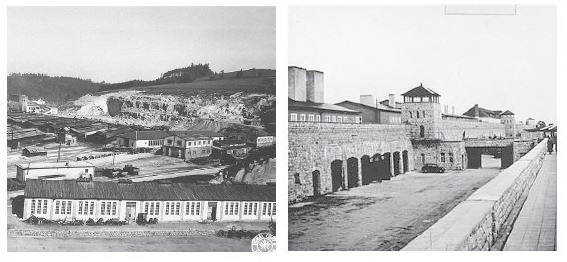The 76th anniversary of the liberation
of Mauthausen-Gusen,
an international ceremony
TORONTO – This year, people around the world commemorate the 76th anniversary of the liberation of Mauthausen-Gusen Concentration Camp (Gusen, Austria). Over the weekend, Poland’s Minister of Foreign Affairs, Zbigniew Rau issued a statement to participants who commemorated the event on May 15 and 16. “Former prisoners, of whom only a handful are still alive, and along with them, Poland and other countries, have been consistently calling for years, for a dignified commemoration of the victims of the Gusen camp”.
On May 5, 1945, the US Army liberated the prisoners of Mauthausen and its subcamp, Gusen, located in Austria. The Nazis operated the concentration camp system between 1938-1945. During its seven-year existence, a total of 190,000 people were imprisoned at the camp. Tragically, at least 90,000 died.
The horrors of the forced labour and death camps should never to be forgotten. Memorials and commemoration ceremonies act as a way for people to remember and respect those who suffered atrocities and died at the hands of the Nazis.
The victims were human beings of different nationalities and followers of various religions and beliefs, although the majority were Jewish. Citizens of 26-countries were imprisoned at the camp, including more than 37,000 non-Jewish Poles, nearly 23,000 Soviet civilians, upwards of 8,000 Yugoslav civilians, about 6,300 Italians and at least 4,000 Czechs.
In Gusen alone, at the height of its operation, about 78,000 people were interned at the camp and 48,000 were murdered. Inmates of the camp referred to the place as “the gateway to hell”. Anyone incarcerated at the camp was stripped of their identity and their dignity. Forced into slave labour under deplorable conditions, inmates perished by the thousands. Few escaped the brutal treatment, not even the intelligentsia, educated members of society with higher social/political status.
Upon liberation in 1945, some 20,000 prisoners were freed from the camp. Shortly afterwards, the structural remains of the Gusen camp began to disappear. Parts of the camp were burnt down and local authorities sold off some of the camp’s contents. Looters hauled off the rest.
In 1955, at the persistence of Polish and French prisoners, the first unofficial memorial was created around the crematorium overs. It consisted of commemorative plaques and memorial stones. These were later relocated to the Mauthausen site, a few kilometers away, when the crematorium was leveled and local authorities parcelled up the lands for housing plans.
In 1961, former Italian prisoners bought the parcel on which stood the crematorium. They gave it to the local community so that a memorial might be restored on the site. Italian architectural firm B.B.P.R (Banfi, Belgiojoso, Peressutti and Rogers) designed the KZ Gusen Memorial, which stands today. Architect Ludovico Belgiojoso was a prisoner of the camp. The firm’s founding member, Gian Luigi Banfi died while imprisoned at Gusen.
For most, the only way to learn about the past is to read and study history. It is another experience to visit the site where historical events have occurred. Memorials link the past to the present. They help preserve memories and enable the living to remember those who were affected by conflict and respect the sacrifices made by past generations.
Earlier this month (May 4), the Austrian Federal Government finalized the purchase of structural remains and land plots of the former Gusen camp complex. Encouraged by the latest development, Minister Rau said: “It is an important step towards safeguarding historical traces that exist there”. The Minister further called for the creation of a new formal memorial site, in addition to a youth education and meeting centre in Gusen to help preserve the memory of its victims. “Commemorating them is our mission and moral obligation”, Rau added.

